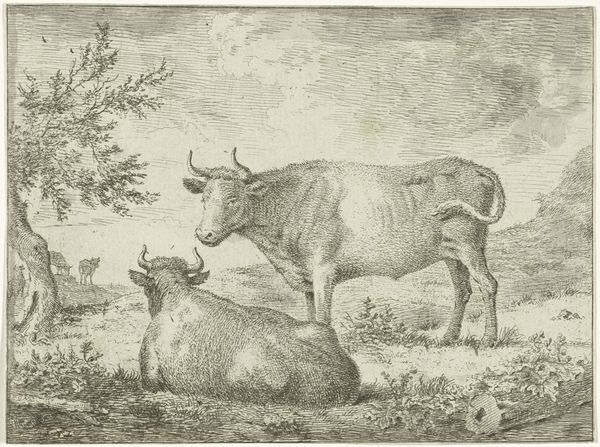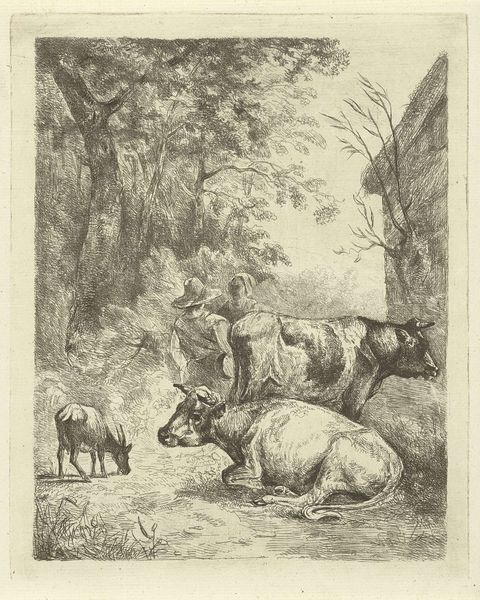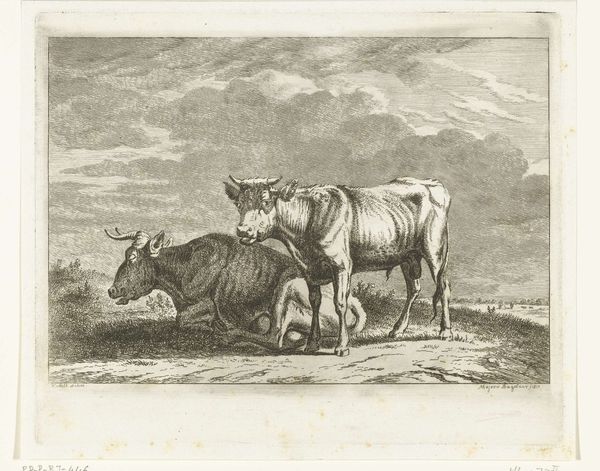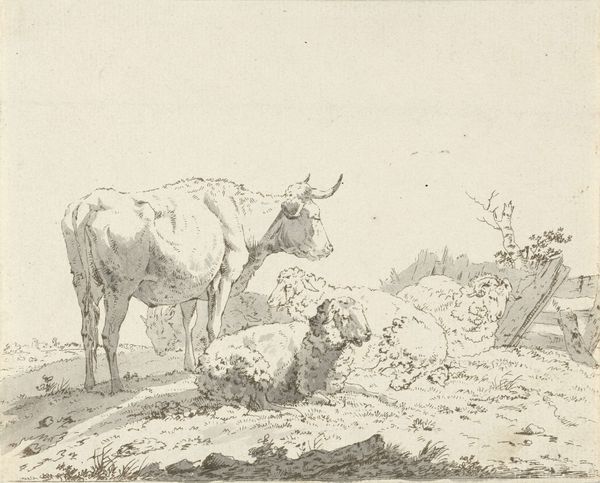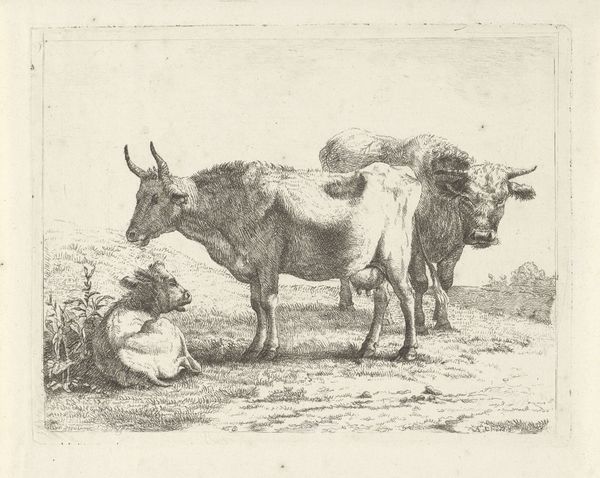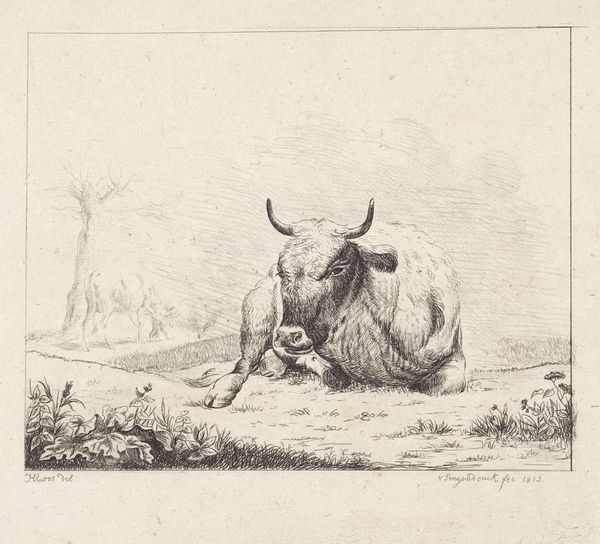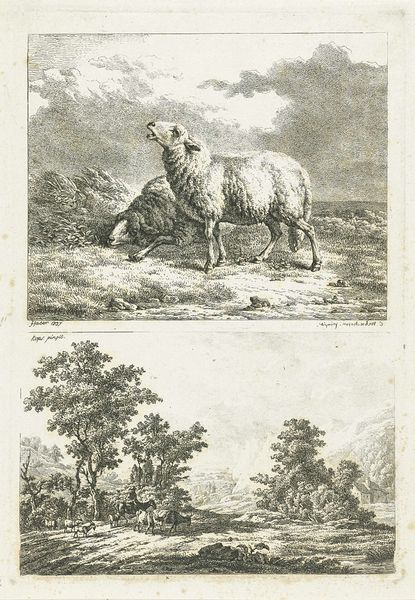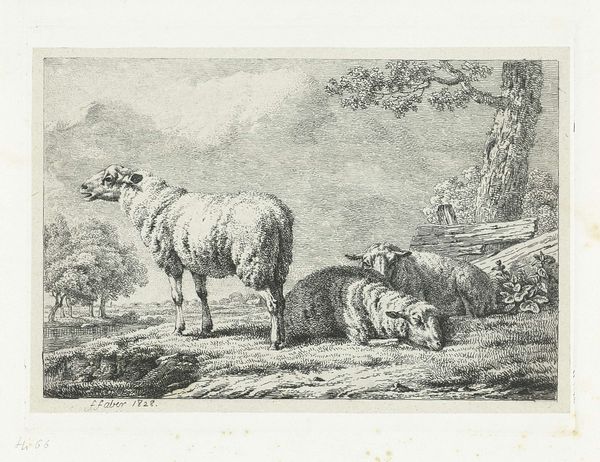
drawing, print, engraving
#
drawing
#
animal
# print
#
pencil sketch
#
old engraving style
#
landscape
#
sketchbook drawing
#
pencil work
#
engraving
#
realism
Dimensions: height 49 mm, width 89 mm
Copyright: Rijks Museum: Open Domain
Editor: This engraving, "Twee liggende koeien," or "Two Reclining Cows," by Johannes van Cuylenburgh, likely made sometime between 1803 and 1841, is incredibly detailed. The cross-hatching gives real volume to the animals. How do you interpret this work? Curator: The piece is so serene, isn’t it? Considering its creation in the early 19th century, it’s hard not to view it through a socio-political lens. The cows, these symbols of agrarian life and sustenance, are rendered with such care. How does it make you think about land ownership and labor during that period? Were these cows a sign of wealth, and for whom? Editor: That's a really interesting perspective. I hadn't considered it beyond its simple, pastoral beauty. It does feel... nostalgic now that you mention it, even idealized. Curator: Precisely! And who is this idealization *for*? Often, such pastoral scenes served to romanticize rural life for an urban audience, masking the harsh realities faced by those tied to the land. Do you notice anything in the composition itself that reinforces this potential tension? Editor: Well, the cows look very relaxed, almost posing, unaware of the socio-economic context they might represent. Curator: Exactly. They're presented passively. Perhaps a commentary, conscious or not, on their lack of agency within the system? It makes one question what is omitted from the engraving, no human labor visible, no hardship. Editor: That makes so much sense. I will never look at another landscape in quite the same way! Thank you! Curator: And I think I might focus a bit more on the agency of animals in similar scenes from now on. A fascinating dialogue.
Comments
No comments
Be the first to comment and join the conversation on the ultimate creative platform.

